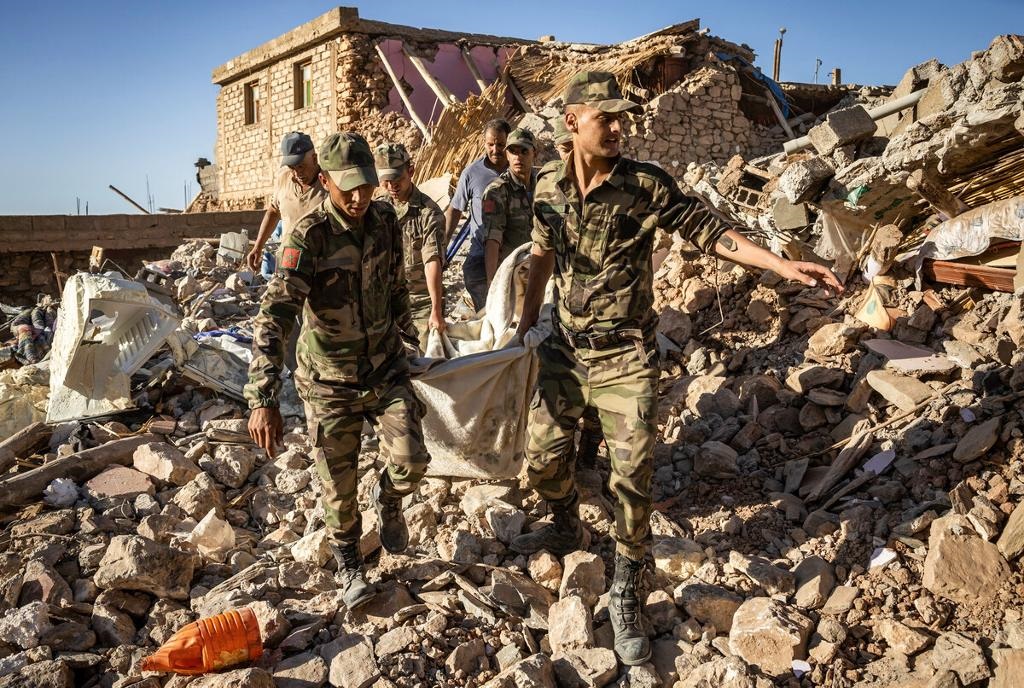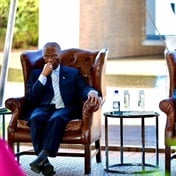
The human toll of the earthquake in Morocco is still being tallied, and the material damage is likely to be extensive. Nothing can replace the loss of life. Yet the history and resilience of a place are instrumental in any recovery, writes Abbey Stockstill.
A powerful earthquake that hit close to the medieval city of Marrakech in Morocco on 8 Sept, 2023, has killed thousands and injured many more. It has also put at risk buildings and monuments of major historic importance, among them the minaret of the Kutubiyya mosque, a 12th-century structure that is an icon of the city.
The Medina, the medieval walled portion of the city, is now littered with rubble. The cultural significance of the Medina extends far beyond the antiques and trinkets sold to tourists.
It is the location of numerous artisan workshops that make the ceramic tiles, carved plaster and intricate woodwork that decorate the city. Many of these workshops have maintained traditional methods for centuries, transmitting skill sets down through the generations.
Part of Morocco’s bid for Marrakech’s UNESCO status was based on these craft traditions being “intangible cultural heritage,” which the UN describes as knowledge or skills that are passed down orally rather than in written form.
I’ve been working in Marrakech since 2014, living there on and off as I completed research on a book about the development of Marrakech as a medieval metropolis. Although my work focused on the 12th century, the more I learned about the city, the more I realised that most of the urban fabric and architectural sites I was looking at were thanks to the conservation efforts of local workshops.
The UNESCO designation was a historical acknowledgment of the traditions of poor and rural communities that can often get left out of larger conversations about art history. It is precisely these communities that have maintained Marrakech’s architectural heritage for generations, but the earthquake has destroyed the workshops and residences of many in the Medina.
These poor and rural communities are at their most vulnerable just when their skills will be needed the most to help rebuild the city after this disaster.
Oral origins
Marrakech was founded in 1070 by the Almoravid dynasty, which derived from a tribe that was part of a larger non-Arab confederation of peoples now referred to as Berbers.
It was one of the first major cities in the wider Islamic west, known as the Maghrib – now comprising Morocco, Algeria and parts of Tunisia - to be founded by a group indigenous to the region.
The majority of the community spoke a dialect of Tamazight, an Afro-Asiatic language distinct from Arabic. It was primarily an oral language, meaning that knowledge was more commonly handed down via poetic stories rather than written texts.
Some Arabic sources described the Almoravids as “unsophisticated” and “illiterate,” yet the evidence of their architectural and artistic heritage suggests otherwise. In Marrakech, they built an elegantly proportioned dome known as the Qubba al-Barudiyyin and commissioned the elaborate wooden minbar (pulpit) that now sits in the Badi? Palace Museum.
They were followed by the Almohad dynasty, another largely indigenous group, that faced similar accusations in historical accounts despite building the Kutubiyya minaret, Marrakech’s signature monument.
Site of independence movements
The city’s origins as a Berber capital contributed to making Marrakech the epicenter of contemporary Moroccan national identity, rooted in a pride and independence centuries old. Whereas other North African cities had roots in Arab or Roman tradition, Marrakech could claim to be distinctly Moroccan.
In the face of Ottoman expansion in the 16th century, the kingdom of Morocco, based out of Marrakech, was the sole region of the Arabic-speaking world to maintain their autonomy from Turkish control.
Although the French and the Spanish would compete for colonial rule of the country, the Moroccan independence movements of the 20th century were largely based out of Marrakech. The city was so prone to revolt that the French administration moved the colonial capital further north to Rabat.
Even the word “Morocco” is derived from an etymological transmutation of “Marrakech.”
A hidden history
And yet, recovering the city’s significant past is an exercise in reading between the lines.
The oral traditions of the city’s founders were rarely faithfully transcribed. Written sources are often scattered and unpublished, and those that do exist are often written by outsiders or visitors to the city.
The Ottomans were excellent record-keepers, enabling scholars to explore extensive centralised archives on every part of the Arabic world – except Morocco, whose archives remain dispersed and underfunded. Historians have had to work obliquely to uncover concrete details, relying on archaeological and anthropological research to supplement oral traditions.
Integral to these efforts was the role of craft traditions in and around Marrakech. Craft was a key point of France’s colonial efforts in Marrakech, where they established “artisan schools” in the Medina to ostensibly document and preserve their methods. In doing so, the French Protectorate - which ruled the country from 1912 to 1956 - created a kind of living nostalgia within the Medina, conflating the people who actually lived there with the city’s medieval past.
This effectively created a form of economic and social segregation in which craftsmen and their families were siloed into the old town, while the wealthier expatriates and tourists occupied the Ville Nouvelle outside the medieval walls.
Preserving the past through craft
At the same time, these craft traditions are also what made it possible to preserve and restore many of the sites in and around Marrakech that now draw thousands of tourists each year.
The Qasba Mosque, the city’s “second” major mosque after the Kutubiyya and originally built between 1185 and 1189, underwent successive restorations in both the 17th and 21st centuries after political instability led to their decline. In both cases, local artisans were employed to renovate the mosque’s stucco walls and the mosaic tile work known as zellij.
The 11th-century Almoravid pulpit required a team of Moroccan craftsmen to successfully restore the minbar’s intricate marquetry.
Artisans have also been important ambassadors for Morocco’s place in the larger canon of Islamic art, building a courtyard as part of the Metropolitan Museum of Art’s 2011 renovation of their Islamic galleries using 14th-century techniques and materials.
With the Marrakech Medina partially destroyed, many of these artisans and workshops will face tough choices regarding their future. Gentrification over the last decade has priced many residents out of their ancestral homes, and many of these workshops operate on thin margins – too thin to both pay for damages and retain control over their property.
Rebuilding intangible heritage
Parts of the city walls cracked in the earthquake, and an 18th-century mosque in the main square lost its minaret. The historic 12th-century site of Tinmal, not far from Marrakech and nestled in the Atlas Mountains, has also collapsed.
The human toll of the earthquake is still being tallied, and the material damage is likely to be extensive. Nothing can replace the loss of life. Yet the history and resilience of a place are instrumental in any recovery.
It will be the role of Marrakech’s intangible heritage – its artists and artisans – to rebuild after this disaster. In the midst of narratives about caliphs and sultans, philosophers and poets, it can be easy to forget that the people who built these places often went unnamed in the historical texts.
But these artists will need support to maintain Marrakech’s history, to preserve the past for future historians to discover.![]()
Abbey Stockstill, Assistant Professor of Art History, Southern Methodist University
This article is republished from The Conversation under a Creative Commons license. Read the original article.
Disclaimer: News24 encourages freedom of speech and the expression of diverse views. The views of columnists published on News24 are therefore their own and do not necessarily represent the views of News24.




 Publications
Publications
 Partners
Partners























